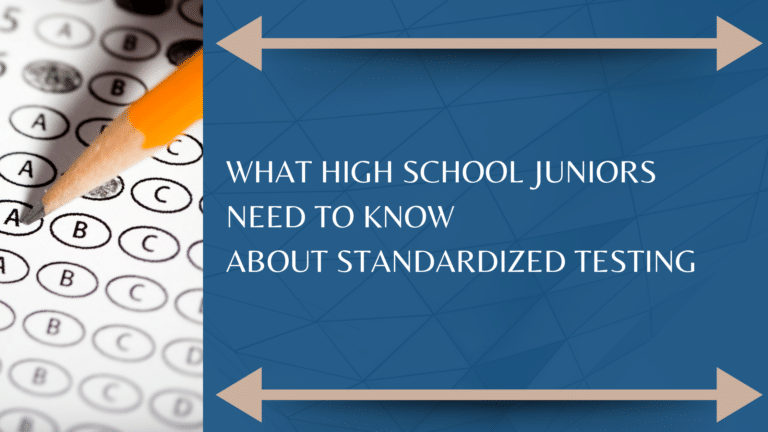Join Our Email List
Get the latest admissions tips and
announcements right in your inbox!
announcements right in your inbox!
We respect your privacy. Unsubscribe at any time.

Let’s just put it out there…standardized testing doesn’t fit most teenagers’ idea of fun. That’s especially true for busy high school juniors, who are striving to get the best possible grades and deepen their meaningful extracurricular involvement. Because the majority of U.S. colleges do not require the submission of ACT or SAT scores, many students are tempted to skip testing altogether. Forgoing testing is a perfectly legitimate decision—and the best one for many students—however, it’s essential for students to understand the modern testing landscape in deciding whether or not to take the ACT or SAT.
Testing policies are all over the map. Over the past few application cycles, colleges have adopted an array of testing policies. Prospective applicants should understand the testing policy at each college on their list—be aware that these policies can even vary within an institution (by individual school or college). At one end of the testing spectrum, some colleges require all applicants to submit test scores. At the opposite end are test-free (or test-blind) policies—no scores are required or even considered. The middle ground is murkier. There are “test-flexible” policies, which means that some testing is required, but it could be AP or IB scores in addition to ACT or SAT scores. There are “test-recommended” or “test-preferred” policies, which are exactly as they sound. Lastly, there are “test-optional” policies, which are the most prevalent among U.S. colleges. These policies empower students to decide whether or not to submit test scores based on whether students feel their scores will strengthen their applications. At Penn State, for example, the decision to submit scores “is all about what the student wants, and how they want to present themselves in the application process at Penn State.”
Testing policies are changing. While researching the testing policies for the colleges on their list, students should make sure they understand the policy for the pertinent application cycle. This year’s testing policy may not be next year’s. Early in 2024, many selective universities reinstated their standardized testing requirements, and some did so for the upcoming admissions cycle. In March, 2024, the University of Texas at Austin announced the reinstatement of its standardized testing requirement beginning with students applying that fall for entry in the fall of 2025. The following month, Cornell University announced that its test-optional schools and colleges were now test-recommended for students applying that fall while its score-free colleges would remain that way. However, Cornell also announced the reinstatement of its testing requirement for all eight of its undergraduate schools and colleges beginning with students applying to enter the university in the fall of 2026. Students should also be mindful that colleges may also reverse their testing policies for certain application cycles despite previous representations to the contrary. Despite its previous commitment to remain test-optional through its admitted Class of 2030, Harvard College announced, in April, 2024, that it would now require testing for applicants to its Class of 2029.
“Test-optional” isn’t one size fits all. Students ask, is test-optional really optional? And, that’s a fair question. If colleges didn’t care about scores, why would they even consider them? While test-optional colleges assure students that a lack of scores won’t be held against them, the reality is that submitting competitive scores can (and often does) advantage students. Think of it as an “optional” captain-led practice for your basketball team. You don’t have to attend, but showing up makes you better and may even earn you more playing time. While admissions officers aren’t devoting time to imagining the scores of a student who applies without scores, some have privately shared that they infer that scoreless students from certain backgrounds tested poorly. The reality is that, all else being equal, students with competitive scores are generally admitted at higher rates than their scoreless peers. Yet, all else isn’t equal, as no two applicants are identical. What’s more, colleges often give differing guidance around whether applicants should submit scores. Some schools explicitly advise applicants to avoid submitting scores below their published ranges while other schools are far less transparent.
So, what should students do? The safest course of action is to prepare for and take the ACT or SAT as if it was 2019 (pre-pandemic). However, the decision to invest time (and possibly money) into testing is a highly individualized one. Students should research the testing policies of the colleges they’re targeting and assess whether they’re likely to change for the pertinent testing cycle. They should also evaluate whether they are likely to earn a score that will strengthen their candidacy at each college on their list. Ultimately, the decision to test or not requires a cost-benefit analysis, as testing can be time-consuming, expensive, and stressful.
